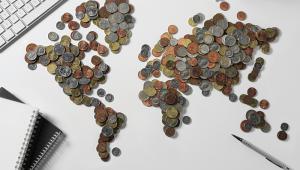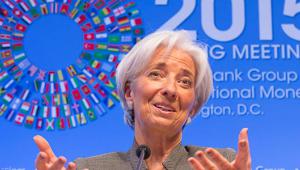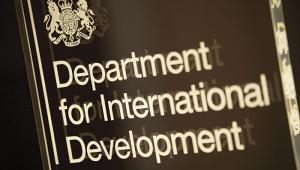When the UK’s National Health Service (NHS) was founded 70 years ago, it was believed that resolving the country’s poor health as a result of years of poor healthcare provision would incur a huge initial expense.
Experts and Nye Bevan – the Welsh Member of Parliament who spearheaded the creation of the NHS – widely expected costs to decline as citizens’ health improved.
They were initially proven right; an early surge in demand for healthcare declined after a backlog of needs had been tackled.
But what Bevan and his colleagues failed to foresee was how advances in medical science would forever push up costs. As the ability to treat and cure more ailments expanded, so the public expected more of the NHS.
How does this help us understand current dynamics around development aid?
Policymakers and the public almost universally accept the narrative that development aid should diminish as the economic ‘health’ of recipient countries improves.
“South Africa is now in a position to fund its own development,” said Justine Greening, the UK’s former International Development Secretary, when she announced plans to end UK aid to South Africa (and later India).
As Donald Kaberuka, former President of the African Development Bank, said in 2013: “It is not a controversial proposition that truly effective aid will progressively put itself out of business.”
Policymakers and the public accept the narrative that development aid should diminish as the economic ‘health’ of recipient countries improves
Taken to its logical conclusion, this narrative would suggest that as countries make progress towards the UN’s Sustainable Development Goals (SDGs), the need for aid will progressively decline to the point where it is no longer needed.
Indeed, many former aid recipients of aid are now becoming important donors themselves, most notably China. Recently, Chile, the Seychelles and Uruguay were deemed too rich to receive aid.
What does this mean for the UN’s longstanding target for high-income countries to allocate 0.7% of Gross National Income (GNI) to development aid (consistently missed, by the way)?
Fast forward 100 years, can we expect to live in a world where there is no need for aid?
Many people would be deeply alarmed at this thought. But it is the logical conclusion of the dominant narrative that aid is a temporary resource transfer from ‘rich’ to ‘poor’.
Much aid does improve human welfare and support economic development (see here for some success stories). But we know that aid also fulfills a wide range of political, military, security, commercial, cultural and other objectives.
And just as Nye Bevan quickly discovered, new issues and ‘ailments’ continuously emerge. The range of issues that development aid is expected to ‘fix’ is constantly expanding.
Aid is now assigned to areas as diverse as support for social services; building trade and productive capacities; institution-building; peace and security; responses to natural and man-made disasters; macroeconomic stabilisation; insurance; and increasingly collective action problems (or Global Public Goods) such as communicable disease control, climate change mitigation, environmental conservation, the preservation of world heritage sites, international terrorism and crime control.
Donors’ attention has also turned to how aid can leverage private capital and provide financial incentives to the private sector to invest in developing countries. Aid has also been used to cancel developing country debt and pay for refugee-associated expenditures in donor countries.
Current thinking is little changed since the 1940s and is conceptually flawed in today’s world
An ever-expanding and evolving set of needs implies increased, not diminished, costs. But beyond this, it is clear that the need for international spending on many of these areas is unlikely to decline any time soon. Indeed, many will require increased financing (climate change mitigation and environmental protection for example). Many are arguably ‘permanent’ in character – the need to respond to environmental shocks, man-made disasters. Some interventions (e.g. communicable disease control, peace and security, or efforts to combat international crime and terrorism) are not only ‘permanent’ but have shared benefits or global security implications.
We need a new narrative around international economic assistance fit for the 21st century. Current thinking is little changed since the 1940s – portraying aid as a short-term charitable act and dividing countries into ‘developed’ (aid providers) and ‘underdeveloped’ (recipients) – and is conceptually flawed in today’s world.
First, we need to understand that in a highly interconnected world, there will always be a need for expenditures of different kinds on international concerns; this includes – but is not limited to – development and humanitarian aid.
It is a controversial proposition to suggest that aid will be “out of business” any time soon. Moreover, these resources are not just about money – often finance is accompanied by specialised technical assistance or policy support, knowledge transfer, and learning.
Second, these expenditures will continuously evolve over time: new challenges will constantly emerge that will require resources from the international community.
Third, aid is only sometimes about a resource transfer from ‘rich’ to ‘poor’. For many expenditures, crude income per capita measurements are less relevant (or less useful) in determining how and where to allocate international public funds. Often a focus will be on how to secure the biggest bang for your buck (especially when it comes to Global Public Goods).
Fourth, we need better ways to fund and organise international cooperation. It is largely ad hoc, organised around voluntary contributions and associations, and subject to political vagaries. We need to ensure that as much international public finance as possible supports – and does not undermine – the SDGs.
Fifth, we need better data and improved transparency to ensure accountability and identify the financing gaps. At present, it is impossible to measure how much individual countries spend on the full spectrum of international issues and concerns.
When it comes to the NHS, few people call for a decline in resources. The opposite is true; they make the case for more – and permanently.
We need to usher in a new era of international cooperation in which there are continuous, on-going and reliable cross-border transfers for internationally agreed public policy objectives such as those enshrined in the SDGs.
It is in the interests of both people and planet.














